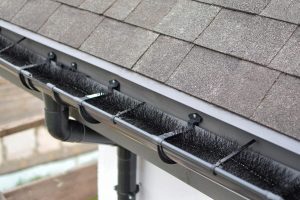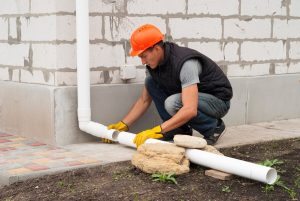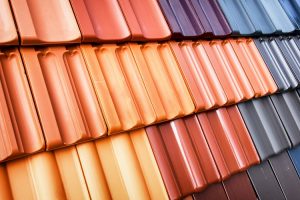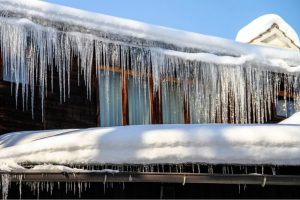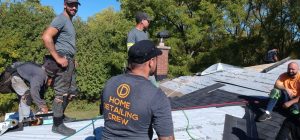What Causes a Roof to Leak During Heavy Rain?
May 30, 2023

Water damage is one of the worst things that can happen to your home. The news of recent flooding in Quebec and BC – which is likely to cause hundreds of millions of dollars in damage – provides a timely reminder that heavy rainfall is one of the primary causes of water damage. Specifically, one of the easiest ways for you home to suffer such damage is through leaks in the roof. But what exactly is it that causes water to leak through the roof, and what can you do to ensure that it doesn’t happen to you? Here are a few reasons why roofs leak during heavy rain.
Design and Environmental Issues
Sometimes houses are just poorly designed, and if this is the case, your choices are unfortunately to live with it or to get it fixed! In terms of roof design, the biggest culprit here is flat roofs, which in a wet climate do not allow for adequate drainage, meaning that the resulting pooling water is more likely to find a path through to the inside of your roof space. If your roof is made of metal, you have problems too: metal roofs can corrode over time, and wear and tear in these roofs can cause leak issues.
Skylights are another design flaw that leads to leakages. No matter how great the view, and no matter how skilfully the skylights were installed, they still produce a higher chance of leaks during heavy rains in particular. Chimneys are another issue; obviously, water can leak in through the chimney itself, but their outer structures are also very good at retaining water, leading to more leaks. The plumbing of a house, if it’s installed poorly, can be another weak point; for example, a ventilation fan duct might be a simple cause. And an attic that is poorly ventilated are a ticking time bomb, because during cold weather an attic that is too hot can melt the snow on the roof and again increase the possibility of leaks.
The environment that your house is situated in is obviously an issue – if you live in an area generally prone to bad weather, you might have suffered roof damage (and hence a higher likelihood of leaks) because of previous storms. If you live in a heavily wooded area, perhaps you have animals climbing on the roof, or tree branches that have fallen on it. Or maybe you have been out on the roof too much yourself. All of these things can cause damage to the roof and thus problems when the rains get too heavy.
Roof Maintenance
Many of the major reasons that your roof might leak has nothing to do with these factors and everything to do with how well you have maintained the roof itself. For example, if your flashing (the thin pieces of metal installed under your roof joints and shingles to create a waterproof barrier) is cracked, this will allow water to leak in. Such cracking happens over time because the tar that roofing contractors use to seal it together can become corroded by the elements. Similarly, broken shingles on your roof – usually caused by high winds and heavy rain – can also let water in. Also, if your roof valleys aren’t properly sealed (thanks again, erosion), rainwater can get inside as it runs down the slope.
Its not just roof materials eroding or being improperly installed that you have to worry about. There are other environmental factors that must be accounted for when performing roof maintenance. Ice dam buildup is an issue in colder climates that results from a ridge of ice forming at the edge of a roof that prevents water from draining off. Clogged gutters and downspouts can also allow water to pool on your roof, giving it more of an opportunity to seep through cracks.

What Can You Do?
What happens if it starts raining and your roof starts leaking? Luckily there are a few simple steps you can take before things get too bad:
- Catch leaks in an emergency by clearing insulation off the wet ceiling drywall in your attic, sponging off any standing water, and putting a bucket on a piece of plywood laid on the joists to catch drips
- Patch the leak temporarily with a piece of plywood or shingle, and roofing tar; when the rains let up, head on to the roof and fortify the shingles around the leaking area with more roofing tar
- If you can’t get into the attic, try using a piece of polyethylene plastic as a temporary roof cover, and ensure that any rain that falls on it is safely drained off the edge of the roof
For more information, speak to a roofing contractor in your area. If you have any roofing questions you’d like to ask us please don’t hesitate to call us at (905) 387 3000 or contact us using the contact form on our website. We’d love to hear from you!
